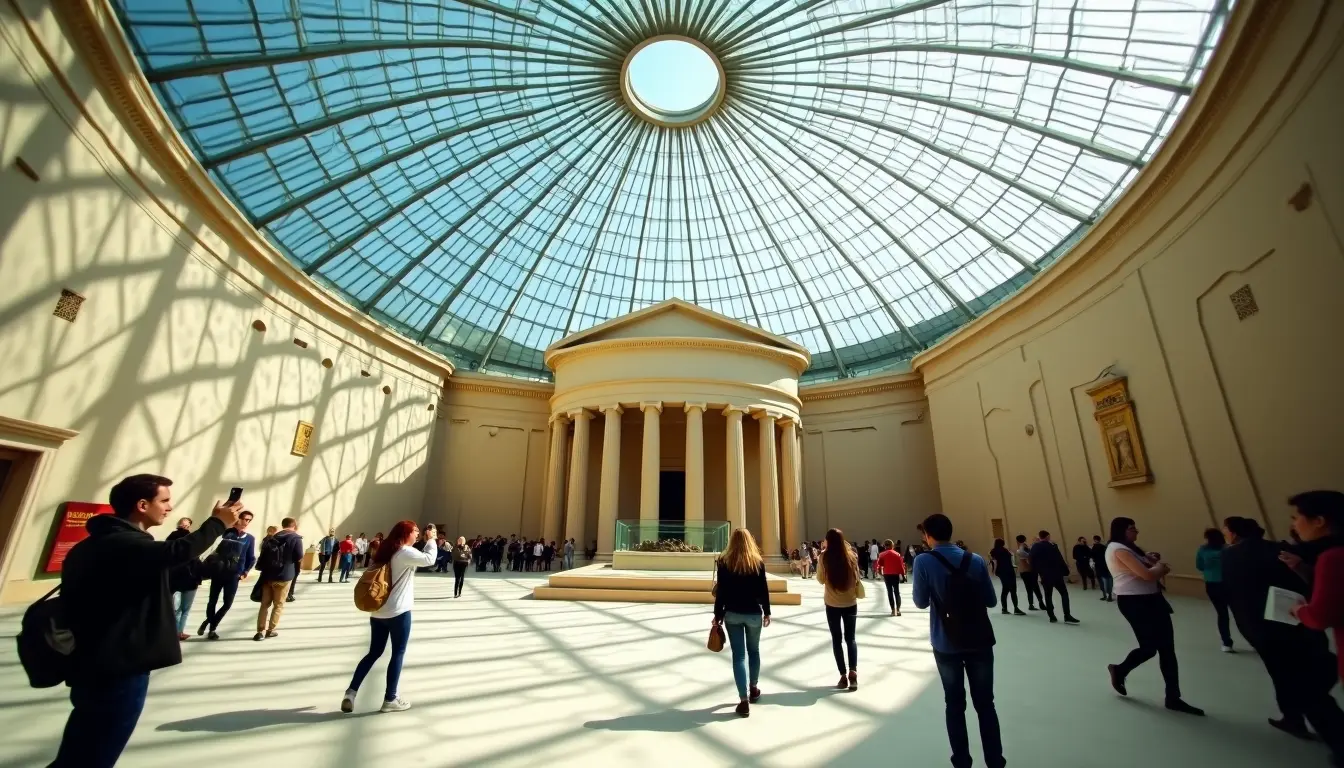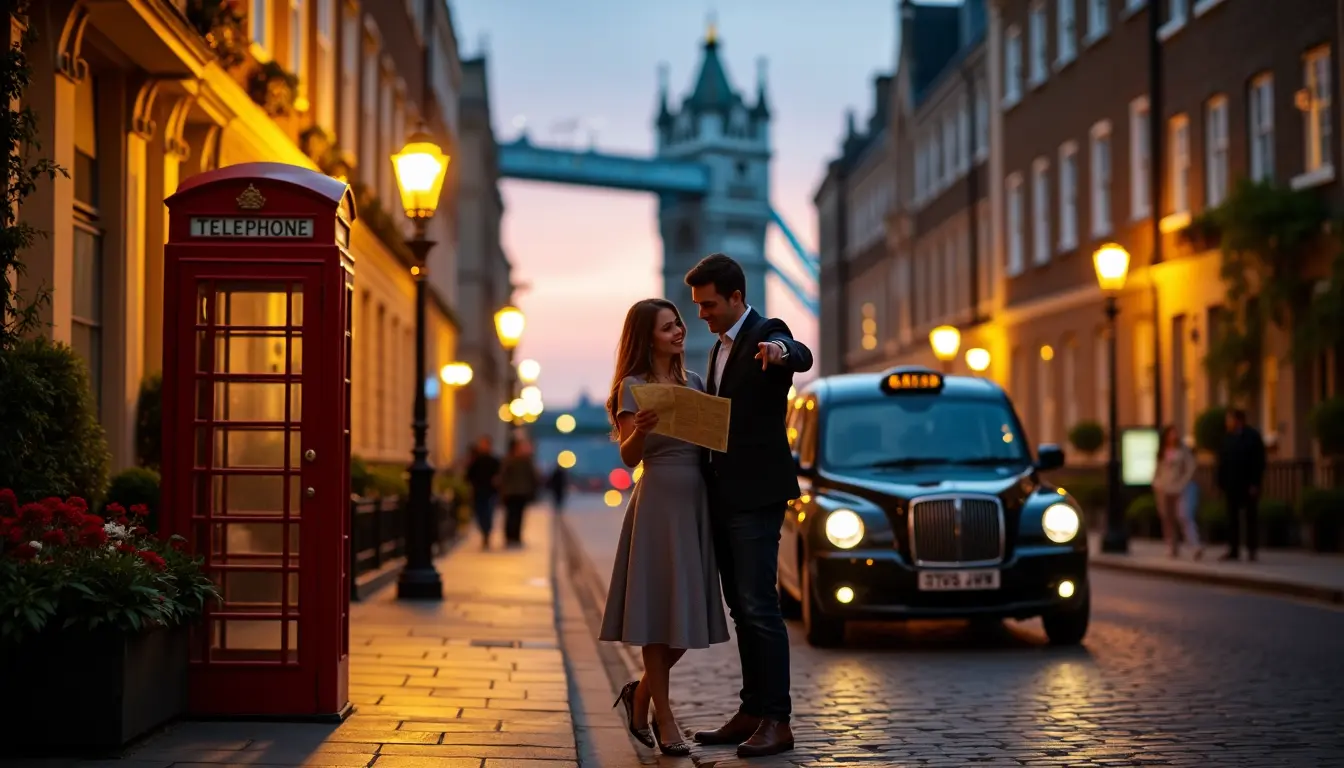Looking for incredible Free Museums in London? Honestly, you won’t believe the treasures hiding inside, and they won’t cost you a penny to see! London has more free museums than paid ones, it’s amazing. I’ve travelled loads and visited countless museums, and let me tell you, London’s free museums house some of the world’s most mind-blowing collections.
These places are packed with history. Think about the British Museum – it holds over 8 million objects telling the story of humankind! Then there’s the Victoria and Albert Museum, showcasing more than 4.5 million pieces of art and design. Fancy dinosaurs or rare gems? The Natural History Museum has you covered with 80 million items. Wow! Exploring free museums in London is easily one of the best ways to spend your time in the city, especially if you’re exploring London on a budget like I often do – check out my guide on other unusual free things to do in London for more ideas!
The city really does offer something for everyone interested in art and history. You can soak up modern art at the Tate Modern, gaze at masterpieces by Van Gogh and Da Vinci at the National Gallery, or dive into Britain’s seafaring past at the world’s largest maritime museum. These 15 brilliant free museums in London make the city a proper cultural playground, even if you’re watching your wallet.
British Museum: A Journey Through Human History
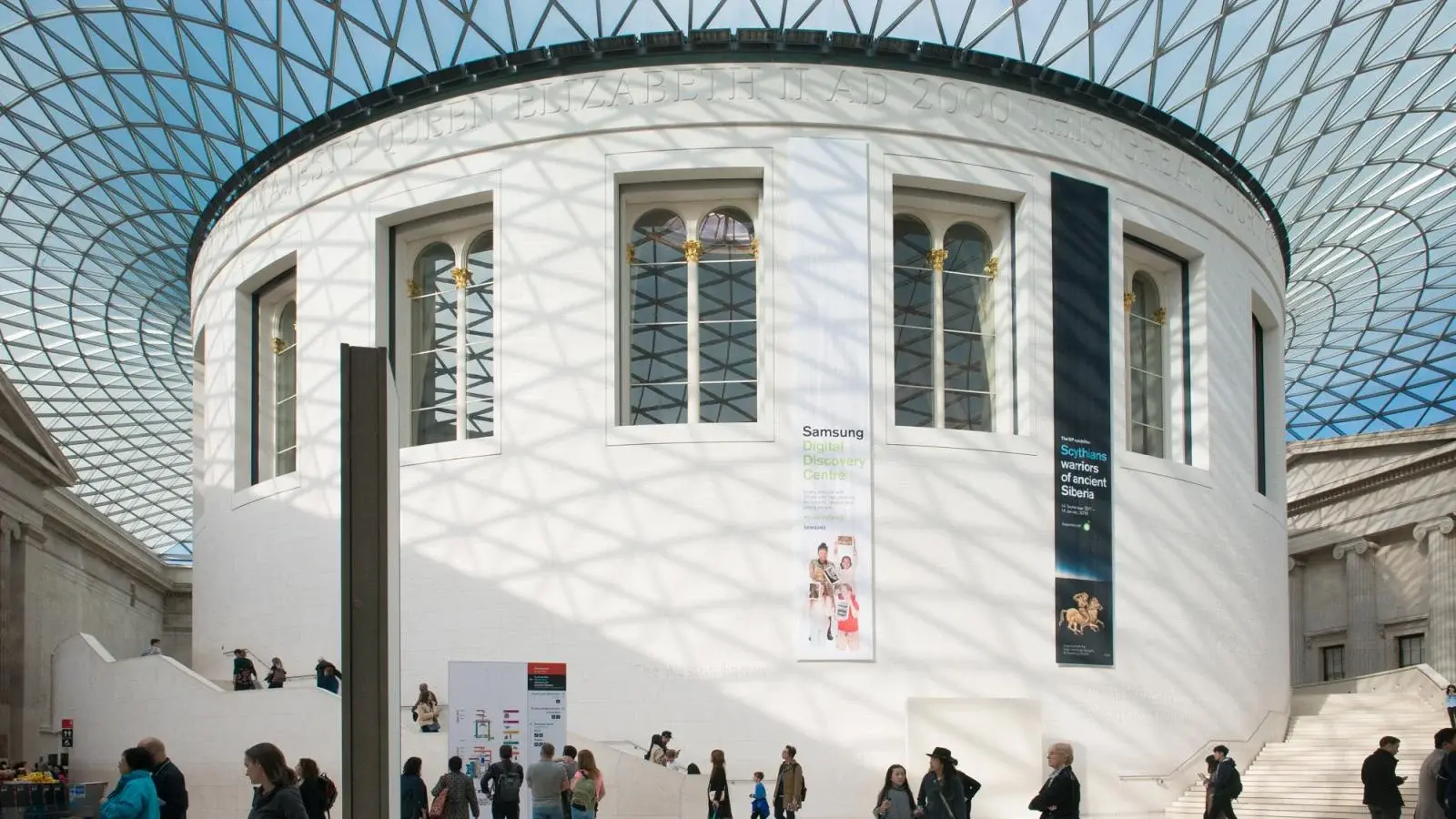
Image Source: British Museum
Let me tell you about the British Museum – it’s the world’s oldest national public museum and an absolute must-see on your list of free museums in London. Seriously, put it right at the top! This cultural giant first opened way back in 1759 and now welcomes over six million visitors every single year. Inside, there’s a staggering collection of eight million objects, although only about 50,000 are on display at any time – not even 1% of the whole lot!
The Rosetta Stone and Egyptian Treasures
The star of the show for many is the Rosetta Stone, sitting right in the centre of the Egyptian collection. French soldiers found this ancient granite slab in Egypt in 1799, and trust me, it was the key to cracking the code of Egyptian hieroglyphics. The stone has three scripts – hieroglyphics, Demotic (a later Egyptian script), and Ancient Greek – all showing the same message about King Ptolemy V. The collection also boasts the massive 7.5-ton bust of Ramesses the Great and the incredibly well-preserved mummy of Katebet, who was a Chantress of Amun around 1300 BC. It’s breathtaking stuff!
Greek and Roman Masterpieces
Walk through the Greek and Roman galleries, and you’ll be surrounded by sculptures that bring the ancient Mediterranean world to life. Room 23 is packed with Roman statues that were based on Greek originals – many nabbed when the Romans admired (and pinched!) Greek art during their conquests. You’ll find amazing treasures here, including the famous Parthenon sculptures (sometimes called the Elgin Marbles) and bits from the Mausoleum of Halicarnassus, which was one of the Seven Wonders of the Ancient World!
Interactive Exhibits and Digital Experiences
The museum has really upped its game recently with cool digital exhibits. In the Assyrian Galleries, projections make the Lion Hunt Reliefs seem to move! And digital displays explain the Vindolanda Tablets (ancient Roman letters written on wood) in the Roman Britain Galleries. Can’t visit in person? You can still explore over 60 galleries using virtual tours on Google Street View. How cool is that?
This place is huge, so a little planning helps. Your best bet is to arrive early (before 10 am) or pop in on a Friday evening when the museum stays open later, until 8:30 pm (instead of closing at 5:30 pm). There’s a free British Museum app with self-guided tours – you can choose ones that take 1, 3, or 6 hours, depending on how much time you have. Entry is totally free, but booking a timed slot online beforehand is a smart move during busy times to guarantee you get in.
National Gallery: Masterpieces From Around the World
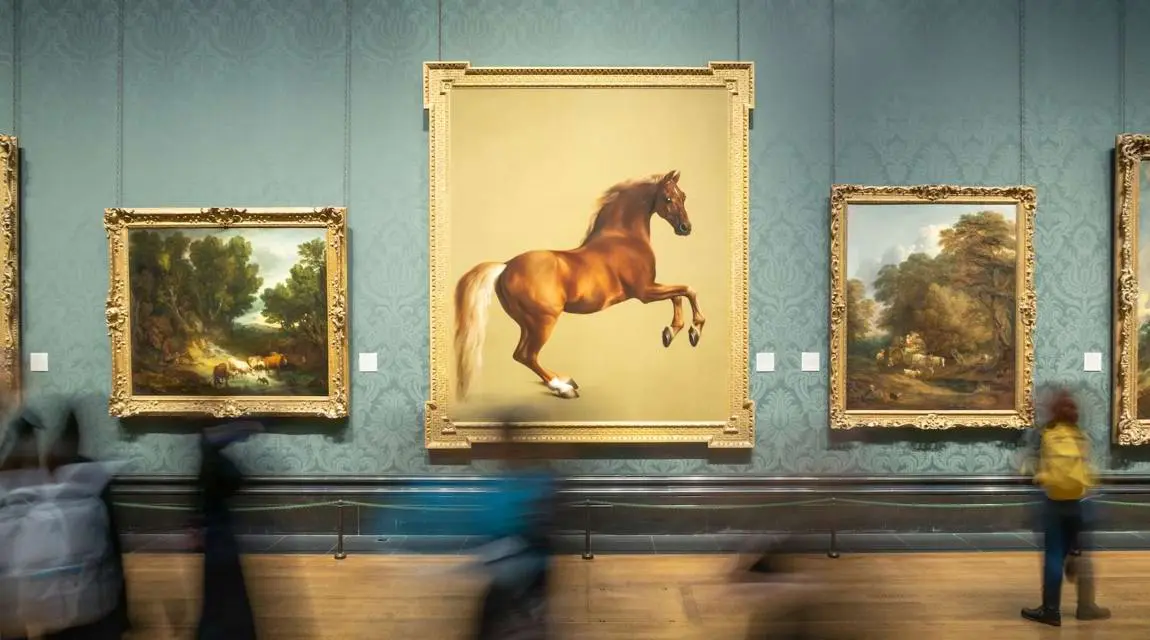
Image Source: National Gallery
Wow, the National Gallery is another giant among London’s free museums, famous for its stunning collection of 2,300 paintings. Around 6 million people visit this world-class gallery each year, making it the fifth most visited museum on the planet! It started small back in 1824 with just 36 paintings, but this art lover’s dream, sitting proudly on the north side of Trafalgar Square, has grown into something truly special.
Must-See Renaissance Paintings
Get ready for some jaw-dropping Renaissance art, organised neatly across four wings by date. Head to the Sainsbury Wing (the blue area) for the early and high Renaissance beauties. Leonardo da Vinci’s ‘Virgin of the Rocks’ is one of the gallery’s absolute favourites – it shows the Virgin Mary with Saint John the Baptist in a really atmospheric, rocky grotto. Botticelli’s ‘Venus and Mars’ is beautiful too, showing the goddess of love watching over the sleeping god of war – a lovely picture of love conquering conflict. And don’t miss Michelangelo’s ‘The Entombment’; it really shows his sculptor’s eye for painting and is one of only three surviving panel paintings by the master himself.
Impressionist Highlights
Over in the green area, you’ll find incredible Impressionist paintings. Everyone flocks to see Van Gogh’s ‘Sunflowers’ – it just glows with his unique style. Seurat’s ‘Bathers at Asnières’ and Monet’s ‘Bathers at La Grenouillère’ are fantastic examples of how the Impressionists loved to capture light and scenes of modern life.
Free Daily Tours and Audio Guides
Exploring this amazing collection costs absolutely nothing! The gallery offers free one-hour guided tours from Monday to Friday, 2 pm to 3 pm (but not on bank holidays). If you’re short on time, there are three self-guided “Art Routes” that only take about 25-35 minutes each. They don’t give out physical audio guides anymore because of the pandemic, but you can get digital versions using mobile apps.
Best Times to Visit Without Crowds
Want a quieter visit? Try Tuesday mornings before midday. Generally, the spring and autumn months (April-June and September-November) are less crowded than the summer rush and the weather’s usually nice. Friday evenings are great too – the gallery stays open until 9 pm, and you can often enjoy special events like concerts or drawing classes while dodging the biggest crowds.
Natural History Museum: Dinosaurs and Beyond
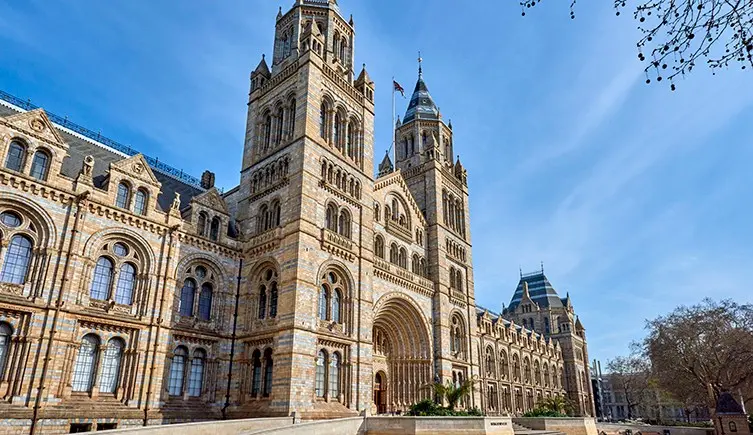
Image Source: Natural History Museum
Dinosaurs! They’re the big draw for so many visitors to the Natural History Museum, but honestly, this South Kensington favourite offers so much more. As one of the best Free Museums in London, especially for families, it’s open all year round with free entry and wows millions with its scientific wonders.
The Famous Dinosaur Gallery
Head straight to the Blue Zone on the Ground Floor for the Dinosaurs gallery. It takes you on a journey through different prehistoric periods. You’ll come face-to-face with a roaring animatronic T. rex (prepare for the kids to love this!) and get super close to a massive Triceratops skull. Sophie the Stegosaurus is here too – she’s one of the most complete Stegosaurus skeletons ever found in Europe! The gallery does a great job explaining the facts about dinosaur extinction (separating truth from myths) and showing how science helps us learn about these incredible creatures.
The Breathtaking Hintze Hall
Walking into Hintze Hall, the museum’s main entrance gallery, feels like stepping into a grand cathedral. It’s huge, with a massive staircase. Hanging dramatically from the ceiling is “Hope,” the gigantic blue whale skeleton that arrived in 2017, replacing the famous Diplodocus cast (Dippy!). Don’t forget to look up! The ceiling is covered in 162 beautiful, hand-painted botanical panels from 1881, showing plants from Britain and across the old Empire, like oaks and exotic flowers.
Interactive Science Stations
The museum is brilliant at letting you get hands-on. In the Dinosaur gallery, there’s a fun quiz to test your fossil knowledge. If you like tech, you can check out 3D models of exhibits, including the famous Diplodocus skull, on a platform called Sketchfab. Plus, you can take an audio tour of Hintze Hall’s star specimens, narrated by the legend himself, Sir David Attenborough!
Special Exhibitions Worth Learning About
Alongside the amazing free permanent displays, the museum often hosts fantastic temporary exhibitions (these usually have an entry fee). The Wildlife Photographer of the Year exhibition is always stunning, showcasing incredible nature photos. During school holidays, there are often fun activities for kids, like LEGO builds or special dinosaur events. They also have a cutting-edge mixed-reality experience called “Visions of Nature” that transports you to the year 2125, showing how our actions today impact the future of our planet.
Victoria and Albert Museum: Design Through the Ages
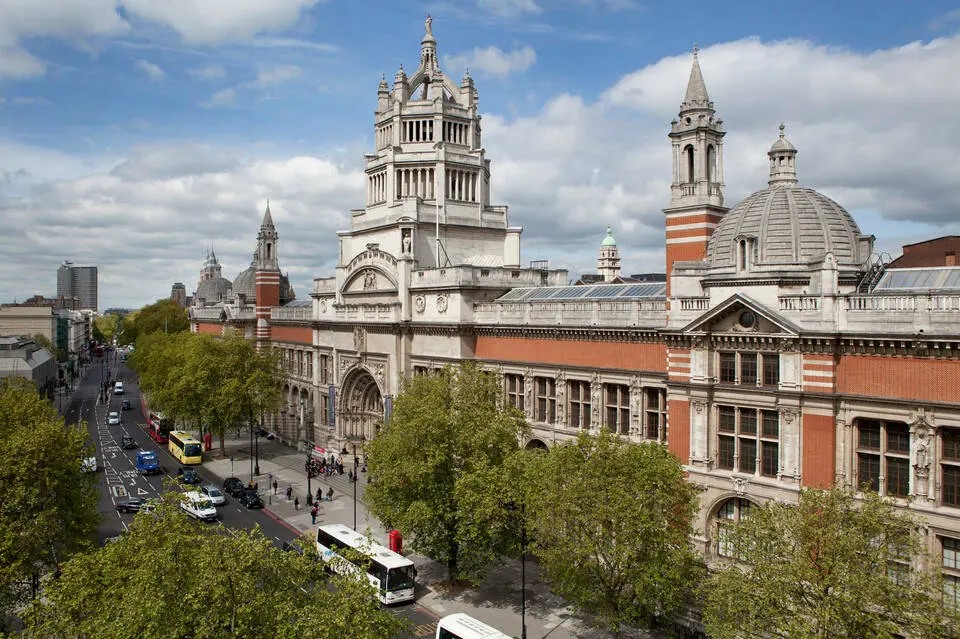
Image Source: Victoria and Albert Museum
Next up is the Victoria and Albert Museum, or the V&A as everyone calls it! This place is incredible, tracing the story of design over 5,000 years. Located in South Kensington (a great neighbour to the Natural History and Science Museums!), the V&A is the world’s leading museum of art and design, and yes, it’s another fantastic free museum in London!
Fashion Through Time Collection
The Design 1900–Now galleries are fascinating, showing off 250 objects from the 20th and 21st centuries. You’ll see everyday things like the very first Apple iPhone and cool 1960s Tupperware right next to powerful designs like Benetton advertising posters from the early 90s. The “British Design 1948–2012” collection is a great journey through modern British creativity. And for twenty years, the Fashion in Motion programme has brought free catwalk shows featuring famous designers like Guo Pei and Alexander McQueen right into the museum!
The Stunning Jewellery Gallery
Prepare to be dazzled in the William and Judith Bollinger Gallery – it holds one of the world’s most amazing jewellery collections. Over 3,000 jewels tell the story of European jewellery from ancient times right up to today. You can gaze at a gold Celtic breastplate, jewelled pendants that belonged to Queen Elizabeth I, and diamonds owned by Catherine the Great. Queen Victoria’s beautiful sapphire coronet, designed by her husband Prince Albert in 1840, is also here. And check out the 49 stunning Art Deco vanity cases by Cartier and Van Cleef & Arpels – a special gift honouring the memory of Freddie Mercury.
Medieval and Renaissance Treasures
The Medieval & Renaissance wing is made up of ten galleries that opened in 2009. These rooms display almost 2,000 objects covering 1,300 years of European art, from the fall of the Roman Empire through the Renaissance. Highlights include the detailed 12th-century Becket Casket, masterpieces by sculpture giants Donatello and Michelangelo, and even notebooks belonging to Leonardo da Vinci! The journey ends in the Renaissance City space with Giambologna’s powerful sculpture “Samson slaying a Philistine” and an entire chapel altar from Florence.
The Beautiful Museum Café and Courtyard
The V&A isn’t just beautiful inside. The Exhibition Road Quarter, finished in 2017, created the UK’s first public courtyard tiled entirely in porcelain – using 11,000 handmade tiles! It’s a lovely space to relax. Visitors love the peaceful John Madejski Garden courtyard with its elegant fountains and the famous Museum Café. The V&A’s Refreshment Rooms are known as some of London’s most stunning café interiors, famous for their gorgeous historic design. Grabbing a cuppa here feels like stepping back in time!
Tate Modern: Contemporary Art in an Industrial Setting
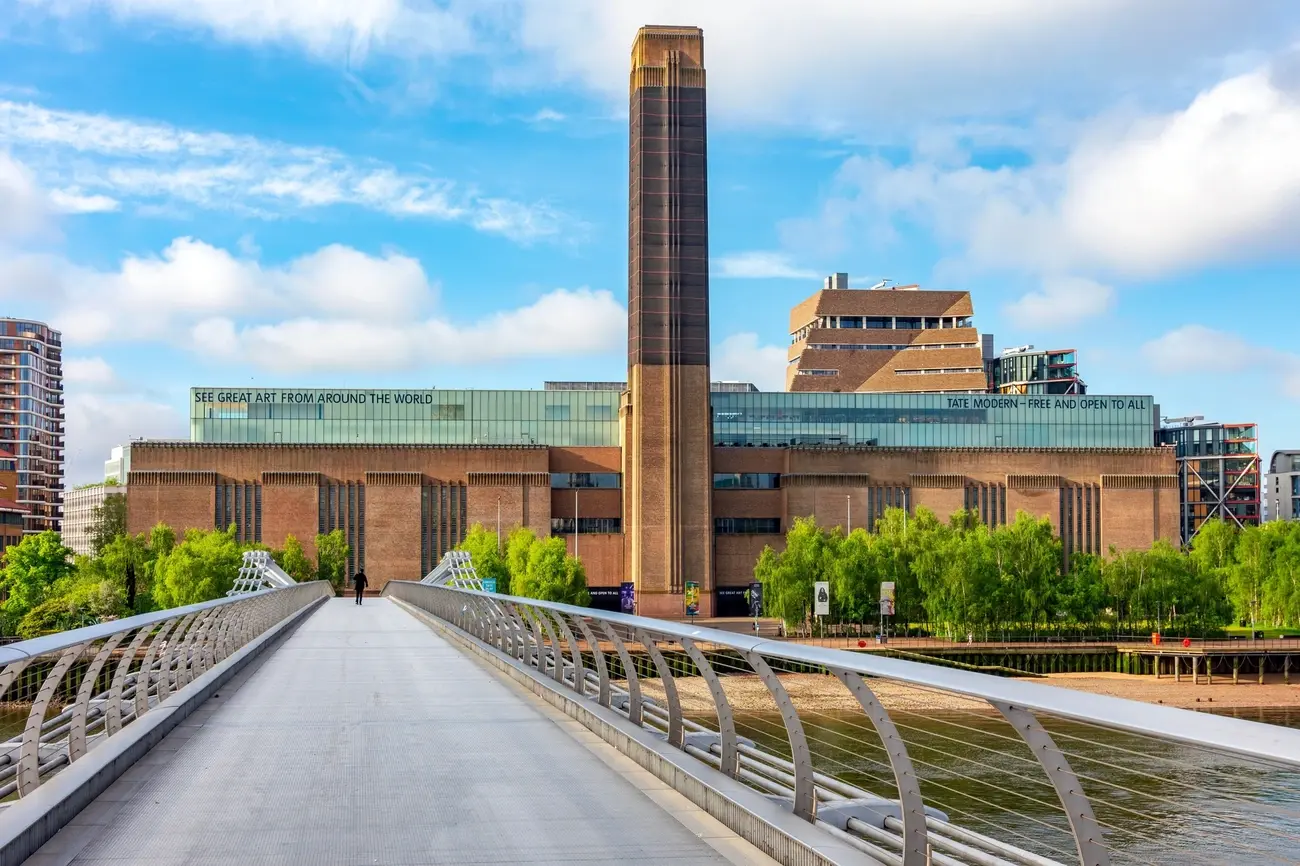
Image Source: Choosewhere
Let me tell you about Tate Modern – it’s Europe’s top spot for modern and contemporary art lovers, and it lives inside a massive former power station on London’s Bankside. How cool is that? This amazing ‘industrial cathedral’ opened back in 2000, and since then, over 60 million people have wandered through its huge halls. It’s definitely one of the most striking free museums in London.
The Turbine Hall Installations
The heart of Tate Modern has to be the monumental Turbine Hall. Honestly, it’s enormous – five storeys high and covering 3,400 square metres! This gigantic space has been home to 22 specially commissioned, large-scale art installations since the museum opened. Remember Louise Bourgeois’ giant spider sculpture “Maman” and those huge steel towers? That was the very first one! Artists like Olafur Eliasson have created unforgettable works here too – his “Weather Project” featured a massive, glowing orange sun and a mirrored ceiling, becoming one of the most snapped installations ever. Right now, Mire Lee’s “Open Wound” fills the space, creating a strange factory vibe with eerie hanging sculptures.
Key Modern Art Masterpieces
Tate Modern holds the UK’s national collection of international modern and contemporary art from 1900 onwards. You’ll find iconic pieces that you might recognise, like:
- Marcel Duchamp’s famous “Fountain” (it’s a 1964 replica, but still iconic!)
- Andy Warhol’s colourful “Marilyn Diptych”
- David Hockney’s cool swimming pool paintings
- Jackson Pollock’s energetic “Yellow Islands”
The Viewing Platform with London’s Best Panorama
For some of the best free views in London, head up to Level 10 of the Blavatnik Building. The viewing gallery reopened in 2023 after being closed for three years, and you can visit daily from 10 am to 5 pm. Just so you know, you can only access three sides now, not all four, because of a legal thing with the fancy flats next door. Still, the panoramic views across London are spectacular!
Interactive Art Experiences
Tate Modern really brings art to life with displays you can get involved in. Yayoi Kusama’s “The obliteration room” was amazing – visitors got to cover a completely white room with colourful dot stickers! Her “Infinity Mirror Rooms” are also mind-bending, creating illusions of endless space. They often have exhibitions like “Electric Dreams” that show off art made with technology, sometimes featuring psychedelic rooms using maths and motors. These sorts of displays definitely rank among the top immersive experiences in London!
Science Museum: Where Innovation Comes Alive
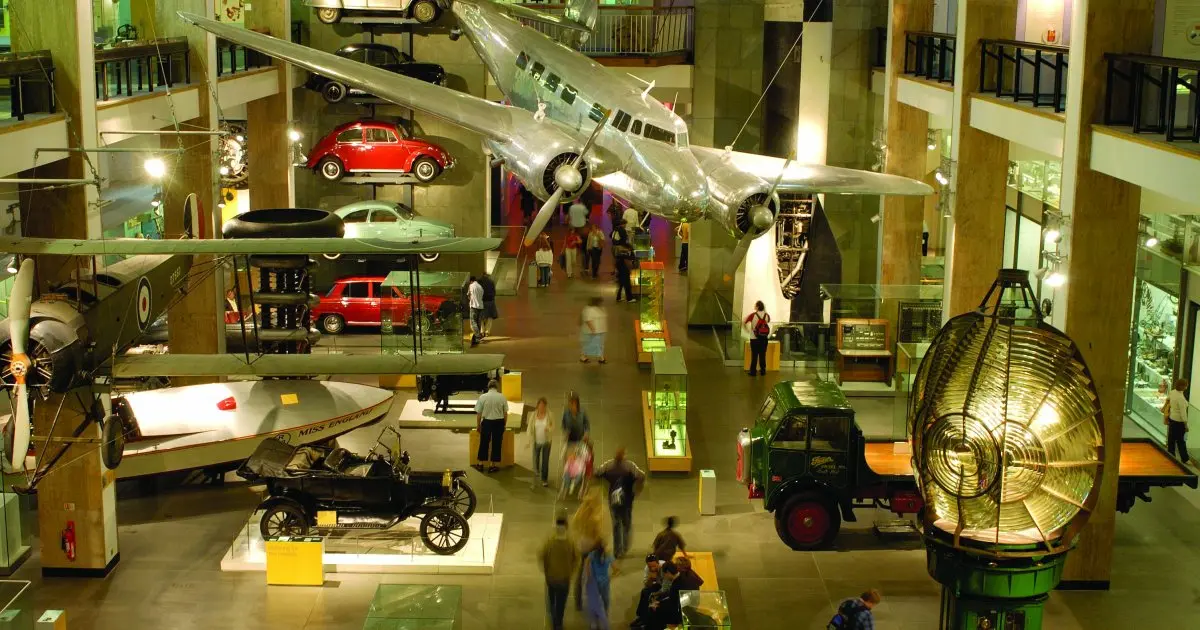
Image Source: Science Museum
Next up is the Science Museum, another South Kensington gem and one of the absolute best free museums in London for curious minds of all ages! It makes science totally fun and hands-on. You can learn about everything from space travel to the digital age, all without spending a penny on entry. It’s a brilliant day out, especially if you’re looking for things to do in London with kids.
The Space Exploration Gallery
Quick heads-up if you’re reading this around Spring 2025! The Exploring Space gallery is set for a revamp. It’s planned to partially close from May 15th, 2025, and fully close on June 2nd, ready for an exciting new Space gallery opening in Autumn 2025. So, try and pop in before then to see the impressive rockets hanging from the ceiling, like the British Black Arrow and the United States Scout rockets. The star is Tim Peake’s actual Soyuz spacecraft that brought him back to Earth after six months in space! Look closely at its charred outside – that tells the story of its fiery 17,000 mph journey back through the atmosphere, where temperatures hit over 1500°C! Incredible!
Interactive Wonderlab
Wonderlab is fantastic! It’s often called “the most spectacular interactive gallery in the world,” and I can see why. It costs extra to get into Wonderlab, but it’s packed with over 50 hands-on exhibits across seven zones covering forces, electricity, light, sound, matter, space, and maths. You can hop on a giant spinning model of the solar system, zoom down a massive friction slide to feel forces, and even watch real lightning strike at the giant Tesla coil! The Chemistry Bar is great too, with live experiments led by friendly science communicators called “Explainers.”
The Information Age Exhibition
This free permanent gallery takes you through 200 years of breakthroughs in how we communicate. You can revisit amazing moments like the very first BBC radio broadcast in 1922 or learn how wireless technology helped save lives during the Titanic disaster. The huge Rugby tuning coil donated by BT is a real engineering marvel to see up close.
IMAX Theatre and Special Experiences
For an extra treat (this part costs money), the museum’s IMAX: The Ronson Theatre offers mind-blowing film experiences on one of the UK’s biggest screens. It’s one of only two screens in Europe that can show films in both the latest digital and traditional 70mm formats. The screen is as tall as four double-decker buses – imagine that!
Imperial War Museum: Understanding Global Conflicts
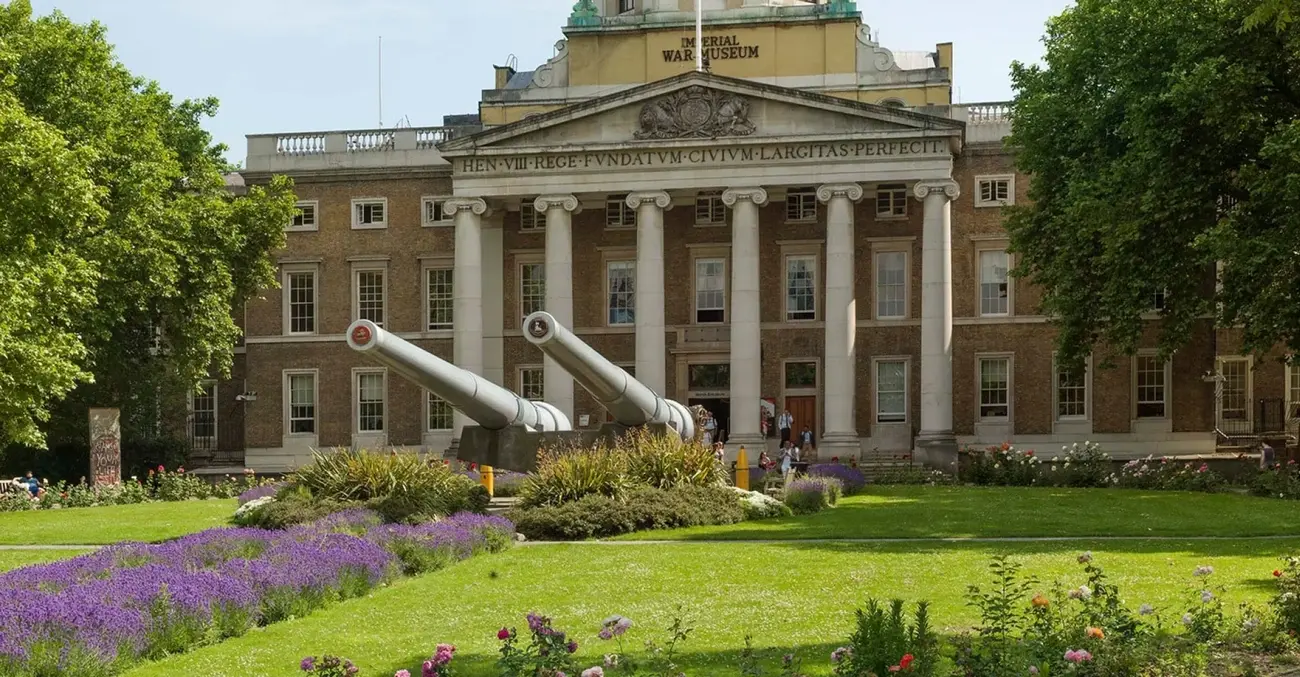
Image Source: Imperial War Museums
Okay, shifting tone a bit, the Imperial War Museum (IWM London) is a really important and thought-provoking place. It explores the impact of conflicts from World War I right up to the present day. It’s another of London’s major free museums, telling powerful stories through personal accounts and incredible objects.
World War Galleries
The Second World War Galleries, which cost over £30 million to create, spread across two floors. They feature over 1,500 items telling the story of a conflict that shaped millions of lives across the globe. These award-winning galleries hold some of the museum’s most significant objects, including wreckage from the USS Arizona, sunk at Pearl Harbor – the first time such an artefact has been displayed outside the USA. Personal stories alongside the objects really help you understand the global scale of this crucial time in history.
The Holocaust Exhibition
The Holocaust Galleries use over 2,000 photos, books, artworks, and personal belongings to tell incredibly powerful stories. They cleverly use colour and light, breaking from traditional museum design, to show how the Holocaust happened in “plain sight” right in the heart of Europe. You can see deeply moving items, like a teddy bear belonging to a child rescued by the Kindertransport, and the birth certificate of Eva Clarke, one of the very few survivors born in a concentration camp.
Secret War Collection
This fascinating collection looks at the work of spies and secret agents. One part focuses on the Special Operations Executive (SOE), the organisation tasked with “setting Europe ablaze” during WWII by helping resistance movements. You can see some ingenious spy gadgets – from knuckledusters hidden up sleeves to nail brushes with secret compartments!
Art and War Displays
The museum has a huge collection of nearly 20,000 artworks documenting conflicts since 1914. Famous artists like Sir William Orpen and John Singer Sargent were commissioned to create pieces during both World Wars. Sargent’s massive, haunting masterpiece “Gassed” is permanently displayed in the Blavatnik Art Galleries. It’s the image most requested by researchers and really captures the impact of modern warfare.
National Maritime Museum: Exploring Britain’s Seafaring Past
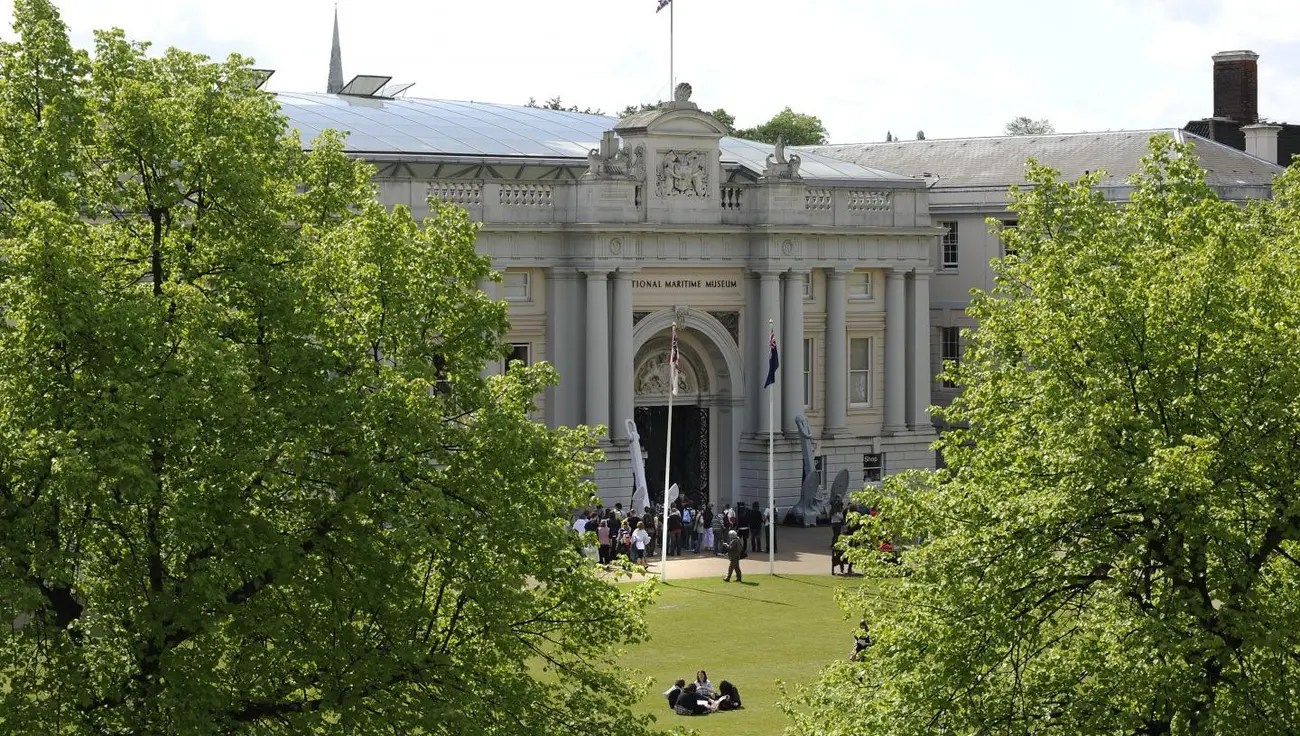
Image Source: Royal Museums Greenwich
Set sail for Greenwich! The National Maritime Museum sits right in the middle of the beautiful Greenwich UNESCO World Heritage site and is packed with Britain’s amazing seafaring history. This world-class museum opened in 1937 and lets you explore the nation’s naval stories through art, maps, manuscripts, and records – all completely free! It’s a fantastic free museum in London to visit.
The Great Map Interactive Floor
Right in the museum’s central area, you can’t miss the Great Map – it’s a huge interactive map on the floor that makes learning really fun. Kids absolutely love steering miniature ships across the oceans to find out about trade routes and explorers. You can literally “walk across the world” while using tablets that reveal fascinating stories about pirates, famous sea battles, and ocean currents linked to specific locations on the map. It’s a brilliant free activity if you’re visiting London with kids!
Nelson’s Uniform from Trafalgar
One of the most moving objects in the museum is the actual uniform coat worn by Vice-Admiral Lord Nelson during the Battle of Trafalgar in 1805. You can see the bullet hole on the left shoulder where he was fatally wounded. The coat tails and left sleeve still have bloodstains – thought to be from Nelson’s secretary, John Scott, who died earlier in the battle. Nelson’s four medals of chivalry, like the Knight of the Bath, are still sewn onto the front. Seeing it sends shivers down your spine!
Ship Models and Maritime Artifacts
The museum has one of the world’s best collections of ship models – around 3,500 of them! Most date from the 16th century onwards, but some go way back to Ancient Egypt. You can see official Navy Board models from 1716, which were like the blueprints for new ships. There are also amazing models made by prisoners of war using bone and even human hair, alongside incredibly detailed replicas of famous ships. If you’re really keen, you can dive deeper into the collection at a dedicated research area nearby.
Global Exploration Exhibits
The museum’s galleries explore Britain’s complicated relationship with the sea and the world. The Pacific Encounters gallery looks at early meetings between European explorers and Pacific communities. The Atlantic Worlds gallery tackles the difficult history of the transatlantic slave trade. These exhibits show how Britain’s power at sea shaped global history, reflecting both the good and the bad.
Tate Britain: The Best of British Art
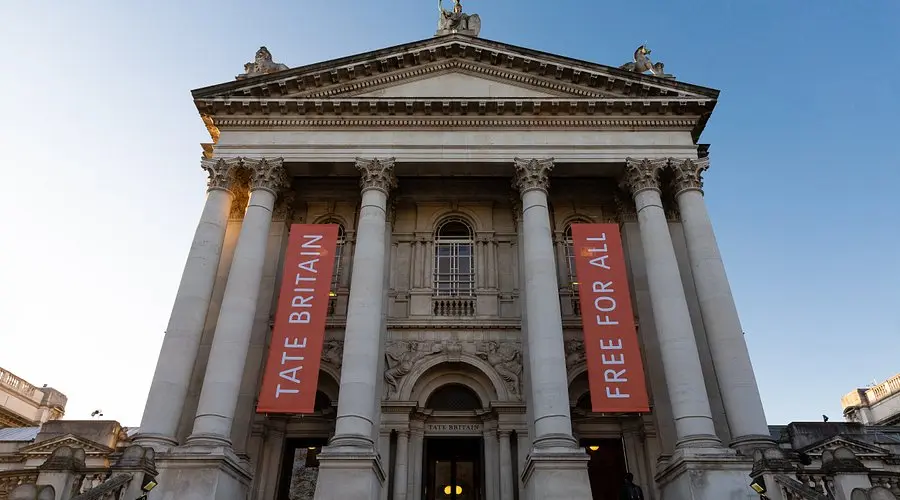
Image Source: Tripadvisor
Art fans, listen up! If you want to dive deep into Britain’s amazing creative journey, Tate Britain is essential visiting. It’s another gem among the free museums in London. This grand building in Millbank holds the world’s biggest collection of British art, covering everything from the year 1500 right up to today.
The Turner Collection
Honestly, the heart of Tate Britain has to be its incredible collection of works by J.M.W. Turner. We’re talking 180 oil paintings and around 19,000 drawings and watercolours (including 300 sketchbooks!). Turner is often called the “father of modern art,” and he really shocked people back in his day with his unique brushwork and revolutionary use of colour. He painted the industrial revolution and the modern world like no one else had before. The Clore Gallery was specially built to house his collection, and they display different selections from this huge treasure trove all the time.
Pre-Raphaelite Masterpieces
Britain’s first modern art movement was started by the Pre-Raphaelite Brotherhood, led by artists like Dante Gabriel Rossetti, William Holman Hunt, and John Everett Millais. They rebelled against the stuffy rules of the Royal Academy and created a totally new style. Ford Madox Brown’s powerful paintings “Work” and “The Last of England” really capture their vision. These artists mixed amazing detail (almost scientific!) with big imagination, tackling religion, literature, poetry, and social issues in their work.
Contemporary British Artists
Fast forward to the 1990s, and the Young British Artists (YBAs) completely shook up the London art scene! London was becoming a real multicultural hub and centre for contemporary art. Artists like Damien Hirst and Tracey Emin became celebrities with their provocative pieces exploring themes like class, gender, and life’s big questions. Other artists like Peter Doig and Wolfgang Tillmans brought different perspectives – thinking about global connections, post-colonial ideas, and queer viewpoints – into Britain’s art world.
The Timeline of British Art Walk
A brilliant way to see how things changed over time is the BP Walk through British Art. It takes you on a journey right from 1540 to the present day, all in chronological order. You can follow British art’s story from Tudor courts through Victorian exhibitions, Edwardian changes, and right up to modern installations. They’ve cleverly arranged it to show the big historical shifts alongside specific artistic details.
Wellcome Collection: Where Science Meets Art

Image Source: Wellcome Collection
Now for something a bit different! The Wellcome Collection, located near Euston station, is a truly unique place where medical history and art collide. It’s one of the most fascinating and unusual free museums in London. You can explore ideas about health through an amazing mix of scientific objects and contemporary art – and yes, entry is completely free!
Medicine Through Time Gallery
The museum was founded by Sir Henry Wellcome, who collected over a million books, paintings, and objects related to health from all over the world! The “Medicine Man” exhibition used to show off some incredible things from his collection, like amazing anatomical models made from wood, ivory, and wax back in the 17th century, plus a special collection of ‘votive offerings’ (objects left as prayers or thanks for healing). In 2021, artists and writers were invited to look at the exhibition’s colonial history, helping to uncover forgotten human stories behind the medical objects.
The Reading Room Experience
Head up to level 2 for the Reading Room – it’s a brilliant mix of a library and a museum gallery. Objects are arranged around themes like travel, pain, food, and the body. You can actually handle things like amulets from different cultures, have a go at drawing a self-portrait, or unfold a copy of an old alchemical scroll. The best part? There are comfy sofas and beanbags where you can just relax and browse through over 1,000 books – everything from novels and memoirs to graphic novels and even pop-up books!
Thought-Provoking Temporary Exhibitions
The Wellcome Collection always has free temporary exhibitions that connect science, medicine, life, and art in interesting ways. A past exhibition called “Medicine Now” shared stories from scientists, doctors, and patients about topics like the body, genomes, and obesity. Currently (check their website for the latest!), you might find exhibitions exploring how physical work impacts health and workers’ rights. They always make you think!
The Beautiful Wellcome Library
The library itself holds thousands of years’ worth of materials about health and medicine from cultures worldwide. Researchers and curious visitors alike can look through historical and modern books, artworks, archives, and manuscripts showing our relationship with health. Anyone over 18 can use the library’s peaceful reading rooms and study spaces. While some really rare items need special handling, the library is open to everyone wanting to learn more about human experiences of health.
Museum of London: The City’s Evolution
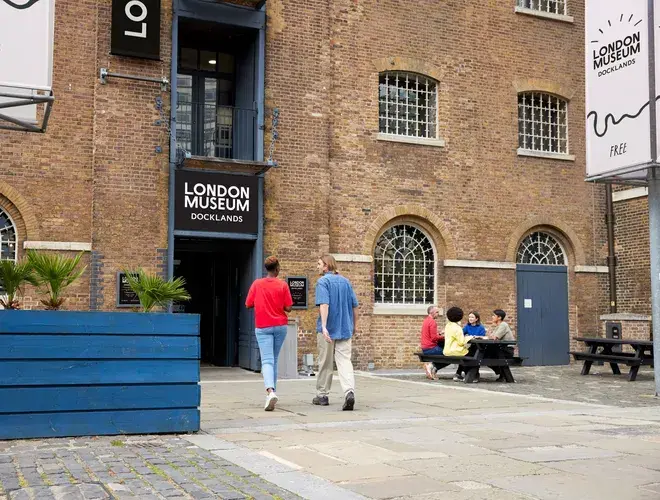
Image Source: London Museum
Want to know London’s life story? The Museum of London (soon to be just ‘London Museum’) tells the amazing tale of the city over 2,000 years, from a small Roman settlement to the buzzing global hub it is today. It’s a fantastic free museum showing London’s journey through fascinating objects and engaging displays, holding the world’s biggest urban history collection with over six million items!
(Important Note: The museum’s London Wall site closed in December 2022. It’s preparing to reopen in a new location in West Smithfield in 2026 as the ‘London Museum’. Keep an eye on their website for updates!)
Roman London Gallery
The Romans founded ‘Londinium’ around AD 50, and the Roman gallery brings this ancient city back to life. It features around 47,000 Roman objects, mostly discovered during building works in London over the years. You can wander through a recreated Roman high street, complete with a bakery, a carpenter’s workshop, and even a pottery shop that was destroyed when Queen Boudica revolted in AD 60! London’s clay soil has amazingly preserved many items – ceramics, marble, metal objects, coins, glass, wood, and even leather.
Medieval London Experience
The medieval section explores London’s changes between the years 1000 and 1500. Not many buildings survive from this time, apart from places like Westminster Hall, the Tower of London, and some churches that escaped the Great Fire. Here, you can learn about big events like the Peasants’ Revolt of 1381, led by Wat Tyler. The gallery also shows cool details about everyday life, like how people celebrated Christmas or the weird fashion trend for incredibly long, pointy shoes!
The Great Fire Display
One of the museum’s most popular exhibits is the diorama showing the Great Fire of 1666. This devastating fire wiped out most of medieval London. Interestingly, recent research by the museum identified the very first person to raise the alarm about the fire starting! The Great Fire is a huge part of history lessons in the UK, and its dramatic story captures the imagination of thousands of schoolchildren every year.
Modern London and Future City
The final galleries (at the old site) showcased London’s transformation into the modern city we know. Now, the museum is getting ready for its exciting move to West Smithfield, rebranding as the ‘London Museum’ (they even chose a London pigeon as their new symbol!). The new site plans creative ways to tell London’s story, including underground ‘Past Time’ galleries set in the building’s huge basement areas. It sounds like it will be amazing when it reopens in 2026!
National Portrait Gallery: Faces That Shaped History
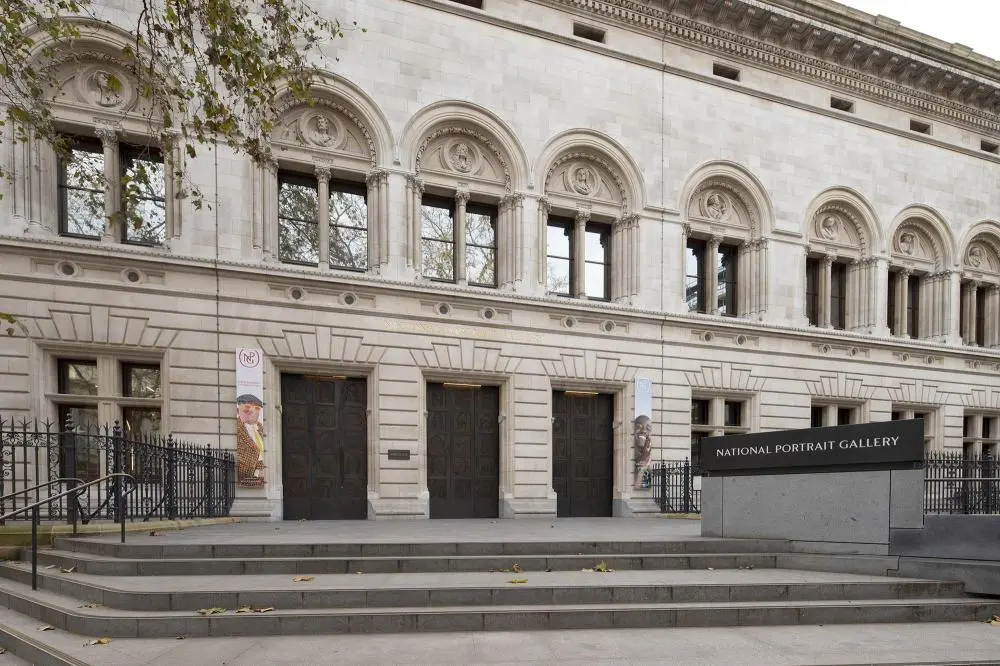
Image Source: National Portrait Gallery
Just reopened after a major makeover, the world-famous National Portrait Gallery is all about celebrating the influential people who shaped Britain – through their portraits! What makes it different is that the focus is on the historical importance of the person pictured, rather than just the artist who painted them. It’s an exceptional free museum in London offering a unique look at British history through faces.
Tudor and Stuart Portraits
Some of the gallery’s most prized works are the early portraits of English monarchs and nobles from the Tudor and Stuart periods. You’ll find portraits of key figures like William Shakespeare – this might be the only portrait painted while he was alive, and it was the very first picture the gallery acquired back in 1856! These paintings also reveal fascinating global connections from the Tudor and early Stuart times, showing how international relationships shaped Britain’s past.
Contemporary Portrait Collection
In the contemporary wing, you’ll see portraits of modern British icons from all walks of life. Think famous faces like Dame Judi Dench (known for everything from Shakespeare to James Bond’s ‘M’), scientists like Stephen Hawking, artists from William Blake to Tracey Emin, and musicians from classical composer Handel to Oasis frontman Liam Gallagher! Speaking of Tracey Emin, she designed the gallery’s striking new bronze entrance doors, featuring 45 portraits of unnamed women.
The Kings and Queens Gallery
Royal portraits are central to the collection, showcasing monarchs from Elizabeth I right up to King Charles III. You can see Henry VIII’s imposing portrait that once intimidated visitors at Whitehall Palace, and a grand family portrait of King George V painted just before World War I. The beautifully restored Blavatnik Wing now houses dedicated galleries tracing centuries of the British monarchy through portraiture.
Digital Portrait Experiences
The gallery is also moving into the digital age! They’re launching “National Portrait Gallery Unframed” in May 2025, working with FRAMELESS Creative. This cutting-edge immersive experience, called “Stories – Brought to Life,” will debut in Salford before touring the UK and internationally. Imagine portraits coming alive beyond the gallery walls using advanced digital projections, Hollywood-style effects, and amazing sound technology! This sounds like another must-see immersive experience in London.
Wallace Collection: A Hidden Gem of European Art
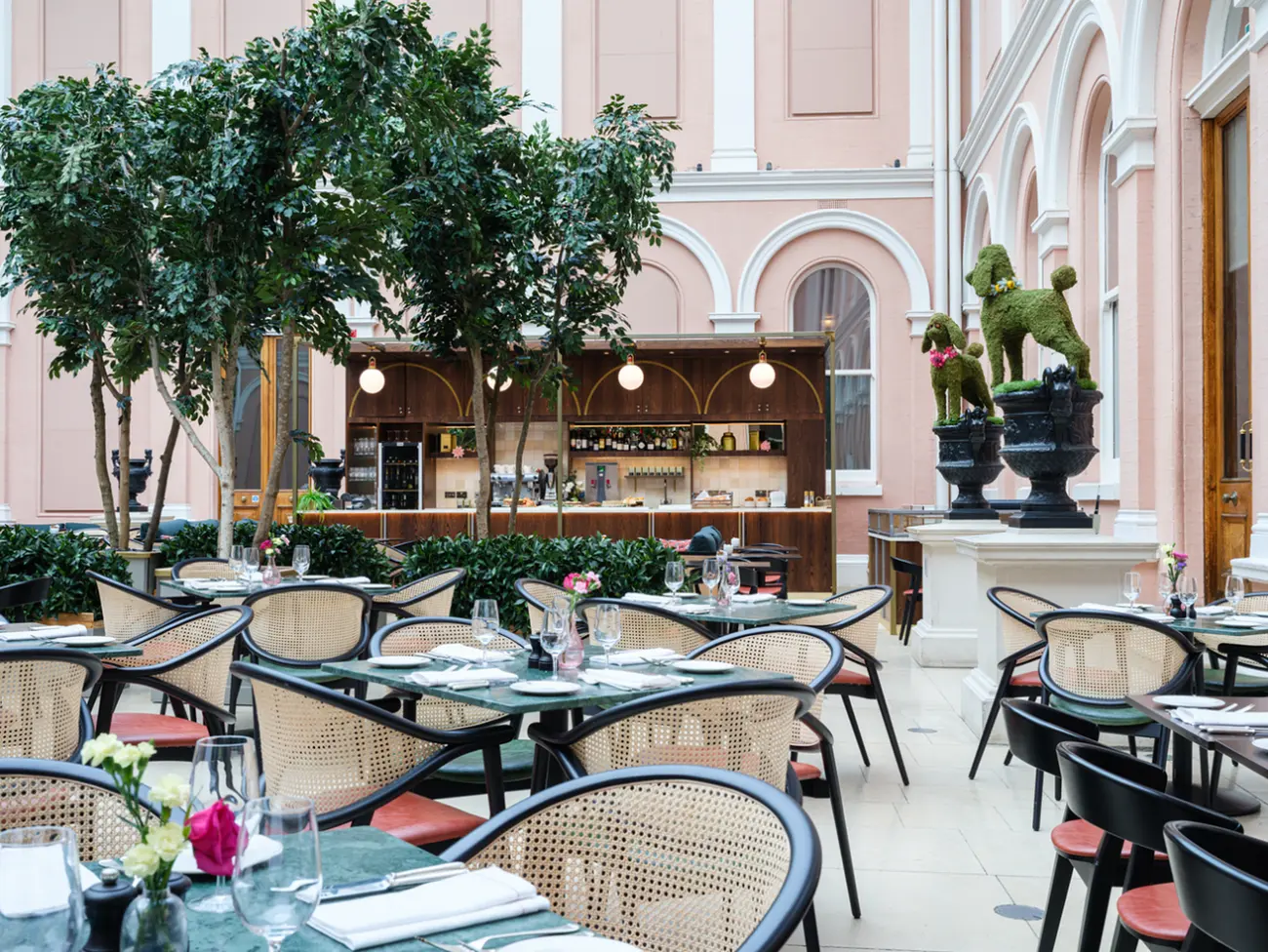
Image Source: The Wallace Collection
Let me tell you about a real hidden treasure – the Wallace Collection! Tucked away in Manchester Square, it’s honestly one of London’s most exquisite free museums. This national museum is housed inside Hertford House, a stunning 18th-century townhouse, and it’s packed with masterpieces of painting, sculpture, furniture, arms and armour, and decorative arts. It’s a must-visit if you enjoy the finer things!
The Grand Armoury Collection
Prepare to be amazed by Britain’s best collection of arms and armour right here! The Fourth Marquess of Hertford started collecting these pieces in the 19th century, gathering weapons from medieval Europe all the way to 19th-century Asia. Sir Richard Wallace, who inherited the collection in 1870, massively expanded it, travelling all over Europe to find exceptional items. You can see incredible armour from Mughal India, the Ottoman Empire, medieval Persia, and feudal Japan – it’s a real journey through warfare across different cultures and times.
18th Century French Paintings
The gallery boasts a superb collection of French 18th-century paintings. Art lovers can get lost in fascinating scenes painted by famous artists like Lancret, Pater, Greuze, and Fragonard. Fragonard’s iconic painting, “The Swing,” is here – it’s one of the most famous images of 18th-century French art! These works really bring the era to life with their detailed scenes of flirtatious moments and leisurely life.
Furniture and Decorative Arts
Did you know the Wallace Collection holds the UK’s most important collection of French furniture? It’s said to rival the collections in the Louvre and Versailles! You can marvel at breathtaking pieces, including furniture that once belonged to Queen Marie-Antoinette. There are six pieces made during Jean-Henri Riesener’s most elegant phase of royal furniture making – the largest collection of Marie-Antoinette’s furniture outside France!
The Beautiful Courtyard Restaurant
Need a break? The museum’s tranquil restaurant sits within a stunning glass-roofed courtyard. This elegant space is open daily from 10 am to 5 pm, offering light lunches, lovely afternoon tea, and coffee. Just remember, it closes promptly at 5 pm when the museum does.
Horniman Museum: Natural History and World Cultures
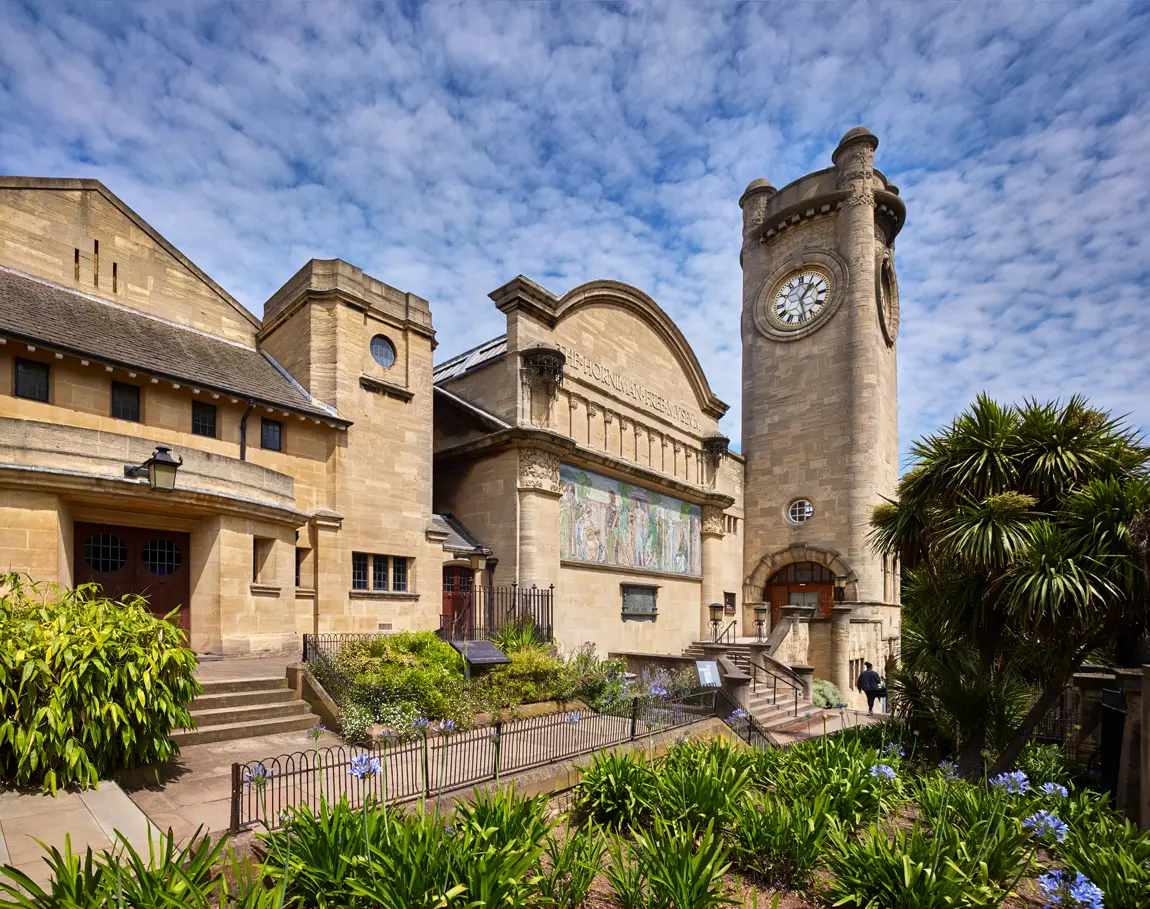
Image Source: Horniman Museum
Head southeast for something wonderfully quirky! The Horniman Museum and Gardens captivates visitors with its unique mix of natural history, anthropology, and musical instruments from around the world. This beloved free museum is a fantastic, refreshing alternative to the big central London giants. It was founded by a Victorian tea trader named Frederick Horniman – what a legacy!
The Famous Overstuffed Walrus
You can’t talk about the Horniman without mentioning its most famous resident: the giant, overstuffed walrus! He’s been living in the Natural History Gallery for over 120 years. He looks a bit strange because the Victorian taxidermists who stuffed him had never actually seen a real, live walrus (they didn’t know about the skin folds!). Mr. Horniman bought this remarkable creature around 1886 from an exhibition in London, but the walrus originally came from Canada’s Hudson Bay. This beloved mascot is currently off display but is set to return in 2026 after the museum’s big ‘Nature + Love’ renovation project is finished.
The Aquarium Experience
Dive underwater in the Horniman’s Aquarium! It features 15 different displays showcasing aquatic life from British ponds all the way to colourful Fijian coral reefs. You can watch South American fish swimming through mangrove roots or spot poison dart frogs nearby. The living coral exhibit is amazing, showing fish interacting with their complex home. Look out for the clownfish and their fascinating relationship with their host anemones! While most of the museum is free, please note there’s a small charge to enter the Aquarium.
Musical Instruments Collection
Music lovers, take note! The Horniman has over 9,500 sound-making objects, making it one of the UK’s richest collections of musical instruments. The oldest pieces are Egyptian bone clappers shaped like hands, dating back 3,500 years! But you’ll also find modern electric guitars and synthesisers, plus instruments from Brazilian street bands and Indian craftsmen. It’s an incredible range.
The Beautiful Gardens with London Views
Don’t miss the museum’s 16 acres of beautiful grounds! There are themed gardens offering spectacular views across London. Kids (and adults!) can play giant musical instruments in the Sound Garden, inspired by the museum’s collection. The Bee Garden uses hexagonal raised beds to attract pollinators. And check out the unique Prehistoric Garden, featuring ancient plant species and even a velociraptor sculpture! Exploring these gardens is like discovering one of the hidden parks in London that locals love. It’s also another reason the Horniman is great for families exploring London with kids.
Sir John Soane’s Museum: An Architect’s Eccentric Collection

Image Source: Sir John Soane’s Museum
Prepare for one of the most personal, atmospheric, and downright eccentric free museums in London – Sir John Soane’s Museum. This incredible house-museum in Lincoln’s Inn Fields holds the vast collection of the famous British architect Sir John Soane, left exactly as it was when he died in 1837. It’s like stepping back in time into his amazing mind! Visiting here is definitely one of the most unusual free things to do in London.
The Sarcophagus of Seti I
Right at the heart of the museum sits its most precious treasure – the stunning alabaster sarcophagus of the Egyptian Pharaoh Seti I, who died in 1279 BC. It was discovered in 1817 by Giovanni Battista Belzoni (a former circus strongman turned explorer!). This translucent masterpiece is covered in hieroglyphs from the Book of the Gates. Soane snapped it up for £2,000 after the British Museum decided not to buy it, making it his most prized possession. He celebrated getting it with three nighttime parties for nearly 900 guests, lighting it beautifully with hundreds of oil lamps and candles!
Architectural Models and Drawings
The museum holds an amazing collection of architectural drawings and models. Soane collected these to use as references and to teach the students in his office. The Model Room displays detailed cork and plaster models of famous ancient monuments alongside models of Soane’s own building projects. Look out for François Fouquet’s intricate plaster models showing ancient buildings as they looked in their prime.
The Picture Room’s Hidden Panels
The Picture Room is genius! It features clever moving “picture planes” – large folding panels hidden in the walls. This allows the small room (only 13 by 12 feet!) to display an incredible 118 paintings. As the panels open and close, they reveal different artworks, including masterpieces by Hogarth, Canaletto, Turner, and Piranesi. As one artist, Pablo Bronstein, said, “suddenly losing sight of a work of art makes it all the more precious.” It’s quite the experience!
Candlelit Evening Tours
For a truly magical visit, the museum holds special candlelit evening tours on the first Tuesday of each month, usually between 6 pm and 9 pm (check their website for details and booking – these often cost extra but are incredibly popular). These atmospheric tours let you see the collection just as Soane’s guests would have done two centuries ago.
Conclusion: Your Amazing Tour of Free Museums in London!
Wow, London’s free museums are truly incredible gems, aren’t they? They house world-class collections covering millennia of history, art, science, and culture, all without charging an entry fee. These 15 amazing places we’ve explored showcase everything from the British Museum’s ancient Egyptian wonders to Tate Modern’s cutting-edge contemporary art.
Each museum tells its own unique story. The Science Museum makes learning fun and interactive, while the National Maritime Museum dives into Britain’s seafaring adventures. The Victoria and Albert Museum celebrates human creativity through stunning design and decorative arts. Trust me, whatever you’re interested in, you’ll find something to fascinate and inspire you in London’s free museums.
These places are like living classrooms, bringing history, art, and science to life for millions of visitors every year. Anyone can just walk in and see the actual Rosetta Stone, admire Van Gogh’s dazzling ‘Sunflowers’, or stand beneath the massive skeleton of Hope the blue whale. It’s amazing!
These institutions make London a genuine global cultural hub where knowledge and inspiration are available to everyone. Their collections are always evolving, with new displays and research, meaning every visit can offer something new. These fantastic free museums in London prove that some of life’s greatest treasures really are there for everyone to enjoy. So go explore!
FAQs about Free Museums in London
Q1. Are all the museums mentioned in the article completely free to visit?
Great question! Most of the museums listed offer completely free entry to see their main, permanent collections. However, some might charge for special temporary exhibitions or specific experiences inside (like the Science Museum’s Wonderlab or IMAX, or the Horniman’s Aquarium). It’s always best to quickly check the museum’s official website before your visit for the latest info on admission.
Q2. What are the best times to visit these museums to avoid crowds?
Generally, visiting on a weekday morning (especially Tuesday or Wednesday) or later in the afternoon tends to be quieter than weekends or midday. Some museums have late openings on certain evenings (like the British Museum on Fridays), which can be a great time to visit. Also, try visiting during the ‘shoulder seasons’ (spring, around April-May, and autumn, around September-October) rather than the peak summer holidays for a more relaxed experience.
Q3. Are there any family-friendly activities available at these museums?
Yes, absolutely! Loads of these free museums in London are fantastic for families. Many offer interactive exhibits, trails, and activities designed specifically for children. The Science Museum (especially Wonderlab, though paid), the Natural History Museum (dinosaurs!), and the National Maritime Museum (the Great Map!) are particularly popular with kids, but most have something to engage younger visitors. Check their websites for family events or guides.
Q4. How accessible are these museums for visitors with disabilities?
Most of London’s major free museums work hard to be accessible to all visitors. You’ll typically find facilities like step-free access or lifts, accessible toilets, and sometimes audio or tactile guides. However, because some museums are in older, historic buildings, accessibility can vary slightly. It’s always a good idea to check the specific museum’s website for detailed accessibility information before you go.
Q5. Can visitors take photographs inside these museums?
Photography rules can differ. Generally, most museums allow non-flash photography for personal use in their main galleries showing the permanent collections. However, there might be restrictions in special exhibition areas, for certain specific artworks (often due to copyright or loan conditions), or for commercial photography. It’s best to look out for signs inside or check the museum’s policy on their website or when you arrive.
